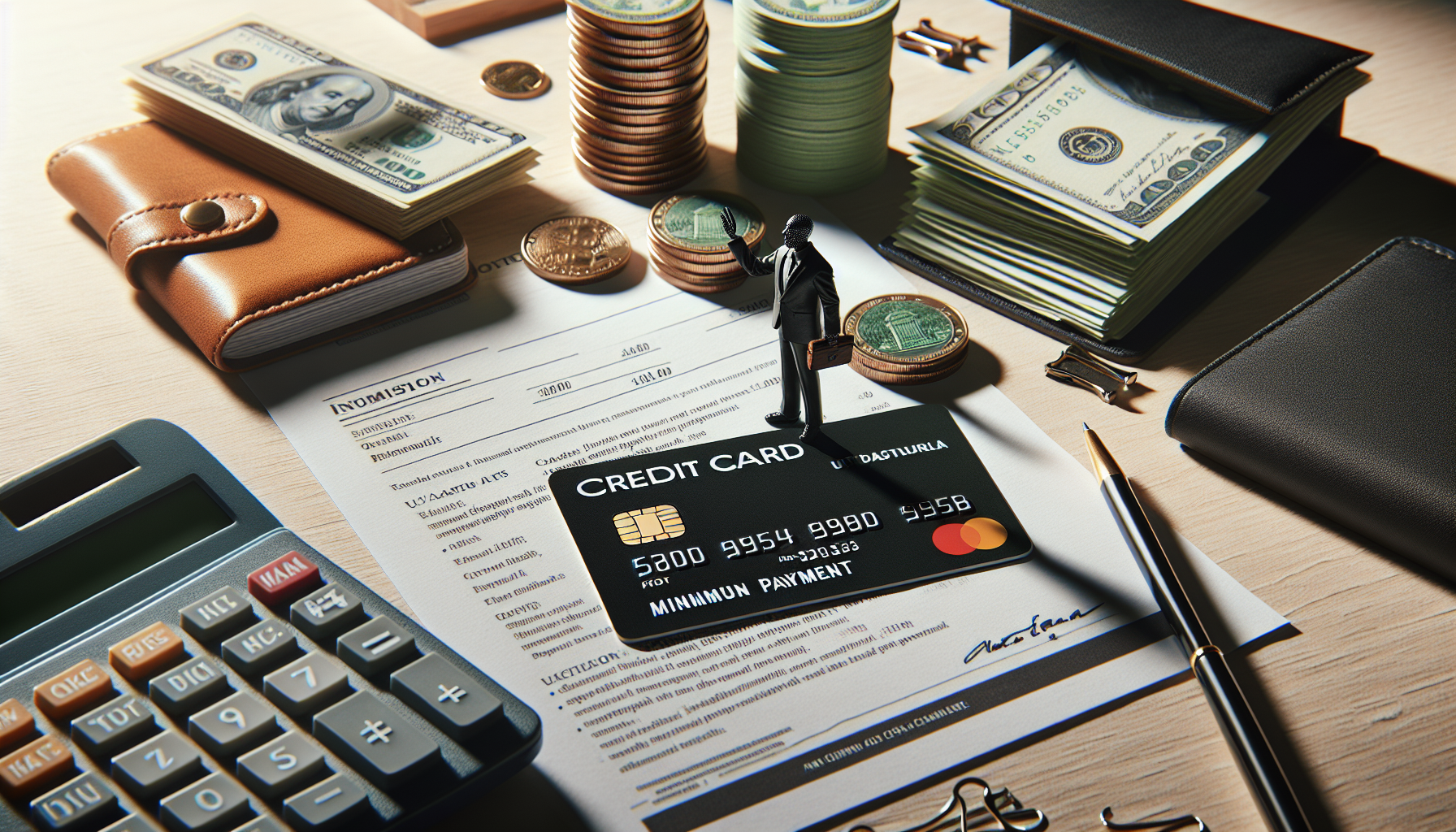Making credit card payments on time is essential for maintaining a healthy financial life. Every credit card has a minimum payment, which is the smallest amount you must pay each billing cycle to keep your account in good standing. Understanding what a credit card minimum payment is, how it’s calculated, and the consequences of only making minimum payments can help you manage your credit card debt more effectively.
What is a Credit Card Minimum Payment?
A credit card minimum payment is the least amount of money you’re required to pay on your credit card bill each month. This amount is determined by your credit card issuer and is based on your current balance, interest rate, and other factors. Paying the minimum payment by the due date is necessary to avoid late fees and negative impacts on your credit score.
It’s important to note that while making the minimum payment keeps your account current, it’s not an effective strategy for paying off your credit card debt. Minimum payments are designed to extend the life of your debt, which means you’ll pay more in interest charges over time.
How Minimum Payments are Calculated
Credit card companies typically calculate your minimum payment as a percentage of your total balance, a fixed dollar amount, or a combination of both. The exact calculation method varies between issuers but usually ranges from 1% to 3% of your outstanding balance, plus any interest charges and fees.
For example, if your credit card balance is $1,000 and your issuer calculates the minimum payment as 2% of the balance plus interest and fees, your minimum payment would be around $20 plus the interest and fees accrued during that billing cycle.
Factors Affecting Minimum Payment Calculations
Several factors can influence how your credit card issuer calculates your minimum payment each month:
- Credit card terms and conditions: Each issuer has its own policies for determining minimum payments, which are outlined in your cardholder agreement.
- Annual Percentage Rate (APR): A higher APR means more interest charges, which can increase your minimum payment.
- Credit score: Cardholders with lower credit scores may be subject to higher minimum payment percentages.
- Promotions and balance transfers: Special offers, such as introductory APRs or balance transfer deals, can affect how your minimum payment is calculated during the promotional period.
Consequences of Only Making Minimum Payments
While making the minimum payment on time each month is important for avoiding late fees and protecting your credit score, it’s not a good long-term strategy for managing your credit card debt. Here’s why:
Slow Debt Payoff
When you only make the minimum payment, you’re effectively paying off your debt at the slowest possible rate. This is because most of your payment goes toward interest charges rather than reducing your principal balance. As a result, it can take years or even decades to pay off your credit card debt if you only make minimum payments.
For instance, if you have a $5,000 balance on a credit card with an 18% APR and a minimum payment of 2%, it would take you more than 30 years to pay off your debt if you only make the minimum payment each month. During that time, you would pay over $7,000 in interest charges alone.
High Interest Charges
When you carry a balance on your credit card from month to month, you’re charged interest on that balance. The longer you take to pay off your debt, the more interest charges you’ll accrue over time. This can make it difficult to make progress on reducing your debt, as a significant portion of your payments goes toward interest rather than your principal balance.
To minimize interest charges and pay off your debt faster, it’s essential to pay more than the minimum whenever possible. Even small additional payments can make a big difference in the long run.
Risks of Missing Minimum Payments
While only making the minimum payment can be costly in the long run, missing a minimum payment altogether can have serious consequences for your finances.
Late Fees and Penalty APR
If you miss a credit card payment or pay less than the minimum amount due, your issuer may charge you a late fee, typically around $25 to $35. Additionally, some credit card companies may impose a penalty APR on your account, which is a higher interest rate that applies to your existing balance and future purchases.
Penalty APRs can be as high as 29.99%, making it even more difficult to pay off your debt. To avoid these additional costs, always make at least the minimum payment by the due date.
Credit Score Damage
Your payment history is the most important factor in determining your credit score, accounting for 35% of your FICO score. Missing a credit card payment can have a significant negative impact on your credit score, making it harder to qualify for loans, mortgages, or other credit products in the future.
Late payments can stay on your credit report for up to seven years, so it’s crucial to prioritize making at least the minimum payment on time each month to protect your credit health.
Benefits of Paying More Than the Minimum
While making the minimum payment on time is essential for maintaining good credit, paying more than the minimum offers several advantages:
Faster Debt Payoff
When you pay more than the minimum, a larger portion of your payment goes toward reducing your principal balance. This can help you pay off your credit card debt much faster, saving you money on interest charges in the long run.
For example, if you have a $5,000 balance on a credit card with an 18% APR and a minimum payment of 2%, paying an extra $100 per month would allow you to pay off your debt in about 3 years instead of 30, saving you over $5,000 in interest charges.
Lower Total Interest Paid
By accelerating your debt payoff, you’ll also reduce the total amount of interest you pay over the life of your credit card balance. This can free up money in your budget for other financial goals, such as saving for retirement or building an emergency fund.
To see the impact of making larger payments, use an online credit card payoff calculator to estimate how much you can save in interest and how quickly you can eliminate your debt by paying more than the minimum.
Strategies for Meeting Minimum Payments
If you’re struggling to make your credit card minimum payments, consider the following strategies to help you stay on track:
Set Up Automatic Payments
Many credit card issuers allow you to set up automatic payments from your checking account each month. By setting your automatic payment to cover at least the minimum amount due, you can ensure you never miss a payment due date, avoiding late fees and credit score damage.
If possible, consider setting your automatic payment to pay more than the minimum to help pay down your debt faster.
Explore Hardship Programs
If you’re experiencing financial difficulties, such as job loss or unexpected medical expenses, contact your credit card issuer to discuss your options. Many companies offer hardship programs that can temporarily reduce your interest rate, lower your minimum payment, or waive certain fees.
These programs can provide short-term relief while you work to get back on your feet financially. However, it’s important to have a plan in place to resume regular payments as soon as possible to avoid falling further behind on your debt.
#ED#
See also:
- What is the Minimum Payment on a Credit Card: Everything You Need to Know
- What Is a Money Transfer Credit Card: A Complete Guide
- How to Get a Credit Card at 18: Everything You Need to Know
- How to Increase Credit Card Limit: Tips and Tricks
- What is APR on Credit Card: Understanding Annual Percentage Rate




